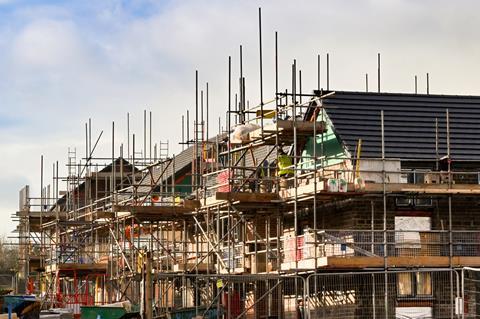Purchasing managers’ survey shows fifth successive monthly decline in activity
Housebuilding output declined in April at its sharpest rate since the pandemic lockdown shut sites across the country, according to the latest figures from purchasing managers.
The numbers from the latest S&P Global/CIPS UK Construction PMI figures published today show that the housebuilding index registered a score of 43, down from 44.2 last month.

The index is calibrated so that any figure below 50 indicates a decline, with the survey stating the score represented the steepest drop in activity since May 2020 in the immediate aftermath of the first pandemic lockdown. Among the reasons given for the fall were delays to new projects, softer market conditions and higher borrowing costs.
The figure represents the fifth month of declining output for the housebuilding sector in the monthly purchasing managers’ data, with the sector still reeling from the after-effects of last September’s mini-Budget.
The figures come a day after the NHBC published housebuilding data which indicated that private sector starts on site had halved in the first three months of the year, compared to the boom quarter at the start of 2023.
The negative housebuilding numbers from the PMI came despite the fact that overall construction recorded slight growth in activity in April on the back of strong commercial and infrastructure output. The commercial construction sector posted a score of 53.9 and civils’ hit 52.
Tim Moore, economics director at S&P Global Market Intelligence, said the rise in output was positive but admitted growth “appears worryingly lopsided as residential work decreased for the fifth successive month”.
New orders rose the third successive month while employment was up in the wake of rising activity and upcoming project starts.
Max Jones, director in Lloyds Bank’s infrastructure and construction team, added: “Construction firms we speak to remain broadly optimistic, with order books holding up and healthy pipelines. Many are now reaping the rewards of strong demand and high prices, without needing to rush to compete on costs.”











No comments yet